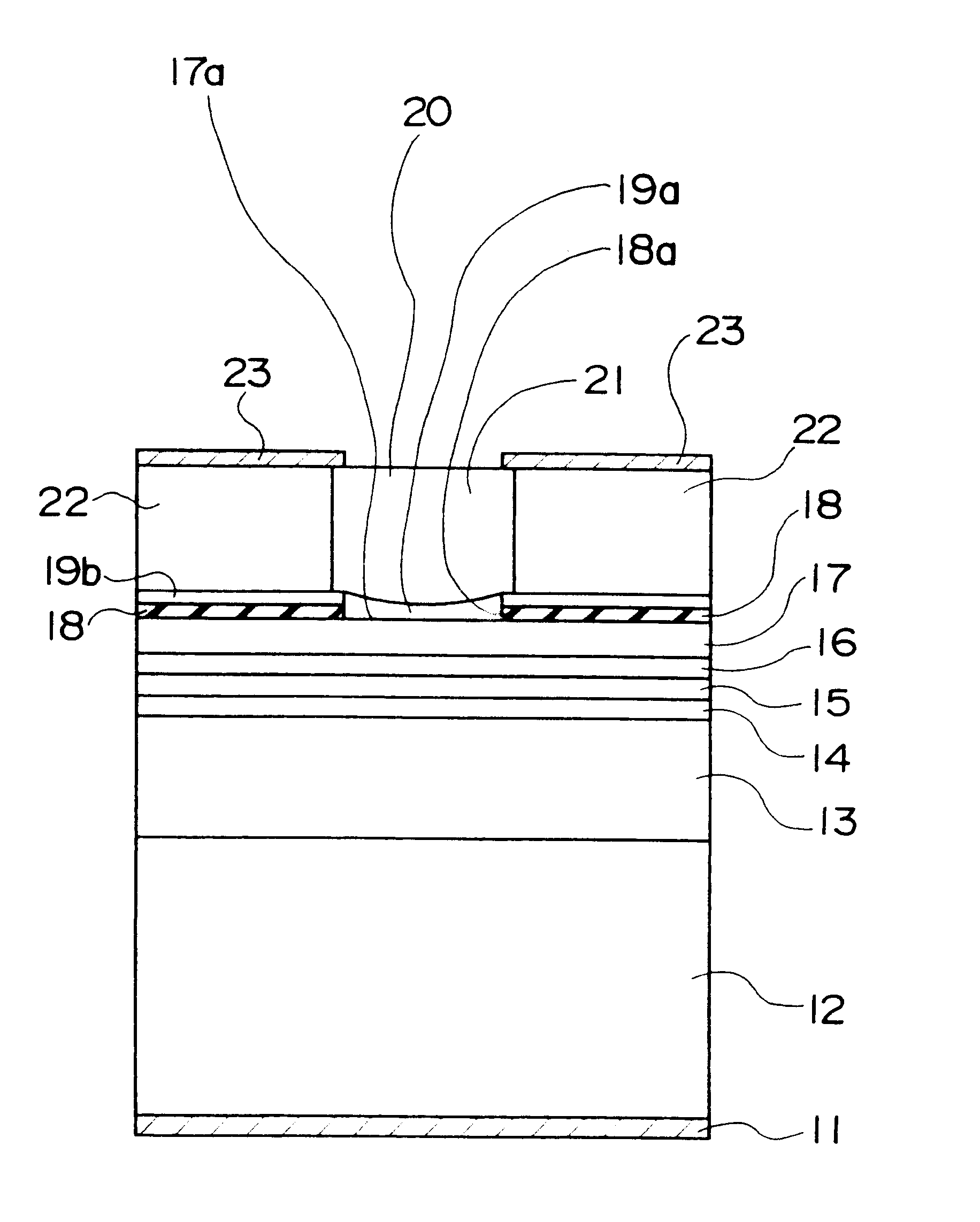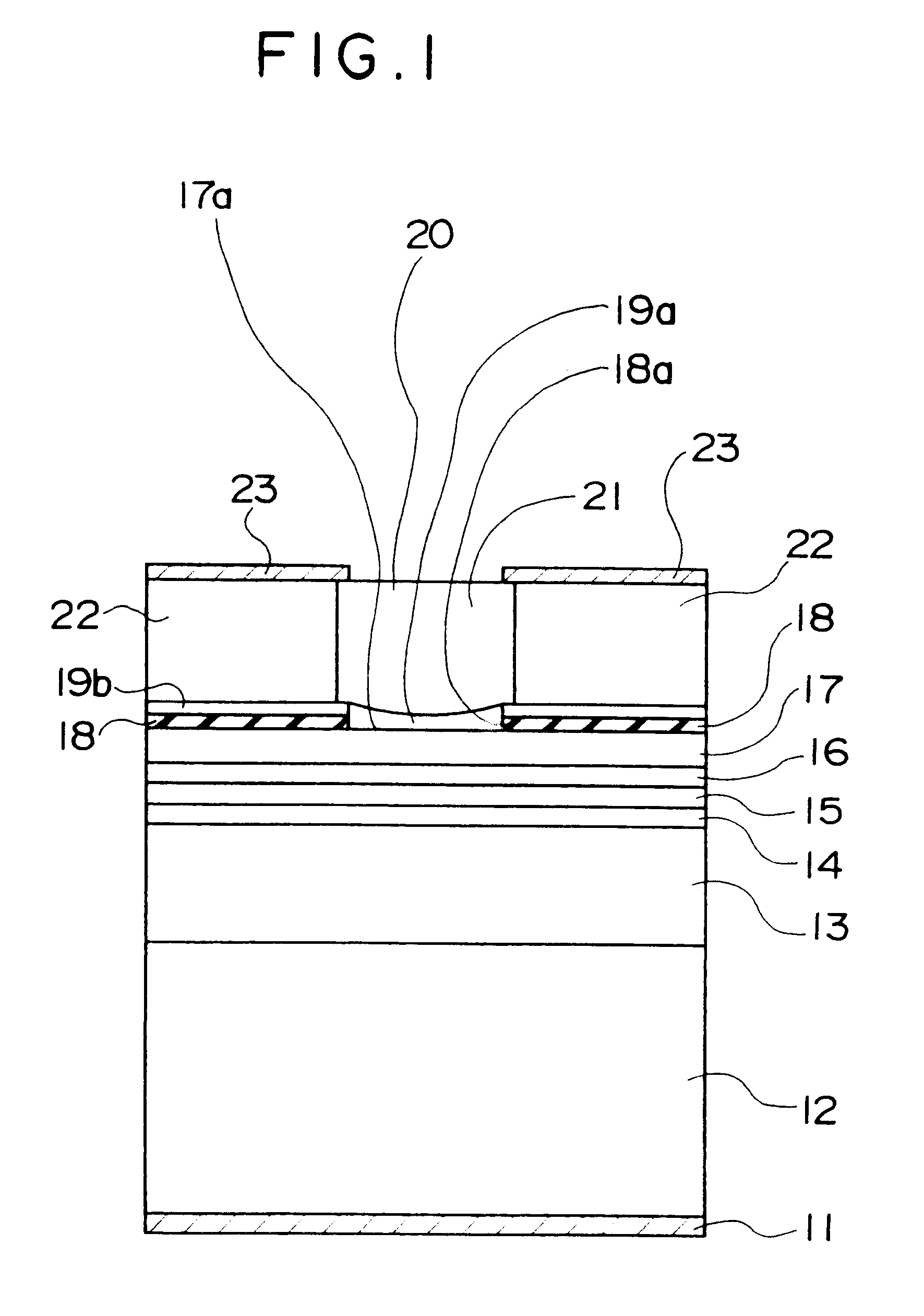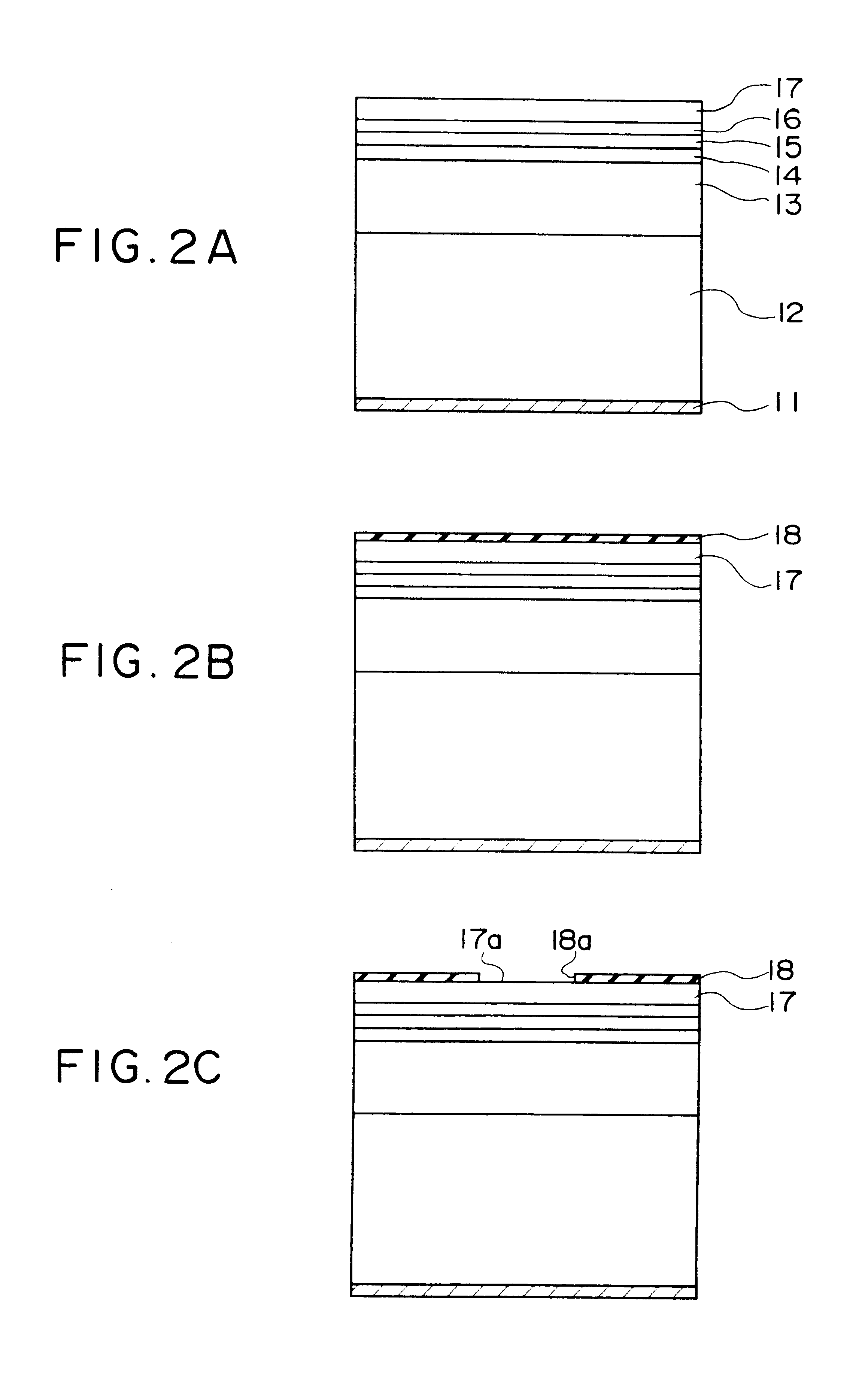Surface-emitting laser and method of fabrication thereof
- Summary
- Abstract
- Description
- Claims
- Application Information
AI Technical Summary
Benefits of technology
Problems solved by technology
Method used
Image
Examples
first embodiment
A cross-sectional view of a surface-emitting laser in accordance with the present embodiment is shown in FIG. 1.
In this figure, a lower electrode 11 is formed on a rear surface of a semiconductor substrate 12 formed of n-type GaAs or the like, by way of example.
A lower reflective mirror 13 is formed above the semiconductor substrate 12. The lower reflective mirror 13 is a distributed reflection type of multi-layer reflective mirror (a distributed Bragg reflector, abbreviated to DBR) having a reflectivity of at least 99.5% with respect to light of wavelengths in the vicinity of 800 nm, formed of 40 pairs of n-type Al.sub.0.8 Ga.sub.0.2 As layers and Al.sub.0.15 Ga0.85.As layers, by way of example.
A cladding layer 14, an active layer 15, and another cladding layer 16 are formed in that order from the bottom upward on the lower reflective mirror 13. The cladding layer 14 is formed of an n-type Al.sub.0.7 Ga.sub.0.3 As layer, by way of example, the active layer 15 is a multi-well struct...
second embodiment
A cross-sectional view of a surface-emitting laser in accordance with a second embodiment is shown in FIG. 4.
In this figure, a lower electrode 11 is formed on a rear surface of a semiconductor substrate 112 formed of n-type GaAs or the like, by way of example.
A lower reflective mirror 113 is formed above the semiconductor substrate 112. The lower reflective mirror 113 is a distributed reflection type of multi-layer reflective mirror (a distributed Bragg reflector, abbreviated to DBR) having a reflectivity of at least 99.5% with respect to light of wavelengths in the vicinity of 980 nm, formed of 40 pairs of GaAs layers and Al.sub.0.8 Ga.sub.0.2 As layers, by way of example.
A cladding layer 114, an active layer 115, and another cladding layer 116 are formed in that order from the bottom upward on the lower reflective mirror 113. The cladding layers 114 and 116 are formed of Al.sub.0.3 Ga.sub.0.7 As, by way of example, and the active layer 115 is a multi-well structure formed of InGaA...
PUM
 Login to View More
Login to View More Abstract
Description
Claims
Application Information
 Login to View More
Login to View More - R&D
- Intellectual Property
- Life Sciences
- Materials
- Tech Scout
- Unparalleled Data Quality
- Higher Quality Content
- 60% Fewer Hallucinations
Browse by: Latest US Patents, China's latest patents, Technical Efficacy Thesaurus, Application Domain, Technology Topic, Popular Technical Reports.
© 2025 PatSnap. All rights reserved.Legal|Privacy policy|Modern Slavery Act Transparency Statement|Sitemap|About US| Contact US: help@patsnap.com



